![]() Just to see life fluttering in the wind making the mast send vibes of bliss; just to watch the stars amid mainsail twists and inhale the innocent breeze of your childhood summers.
Just to see life fluttering in the wind making the mast send vibes of bliss; just to watch the stars amid mainsail twists and inhale the innocent breeze of your childhood summers.
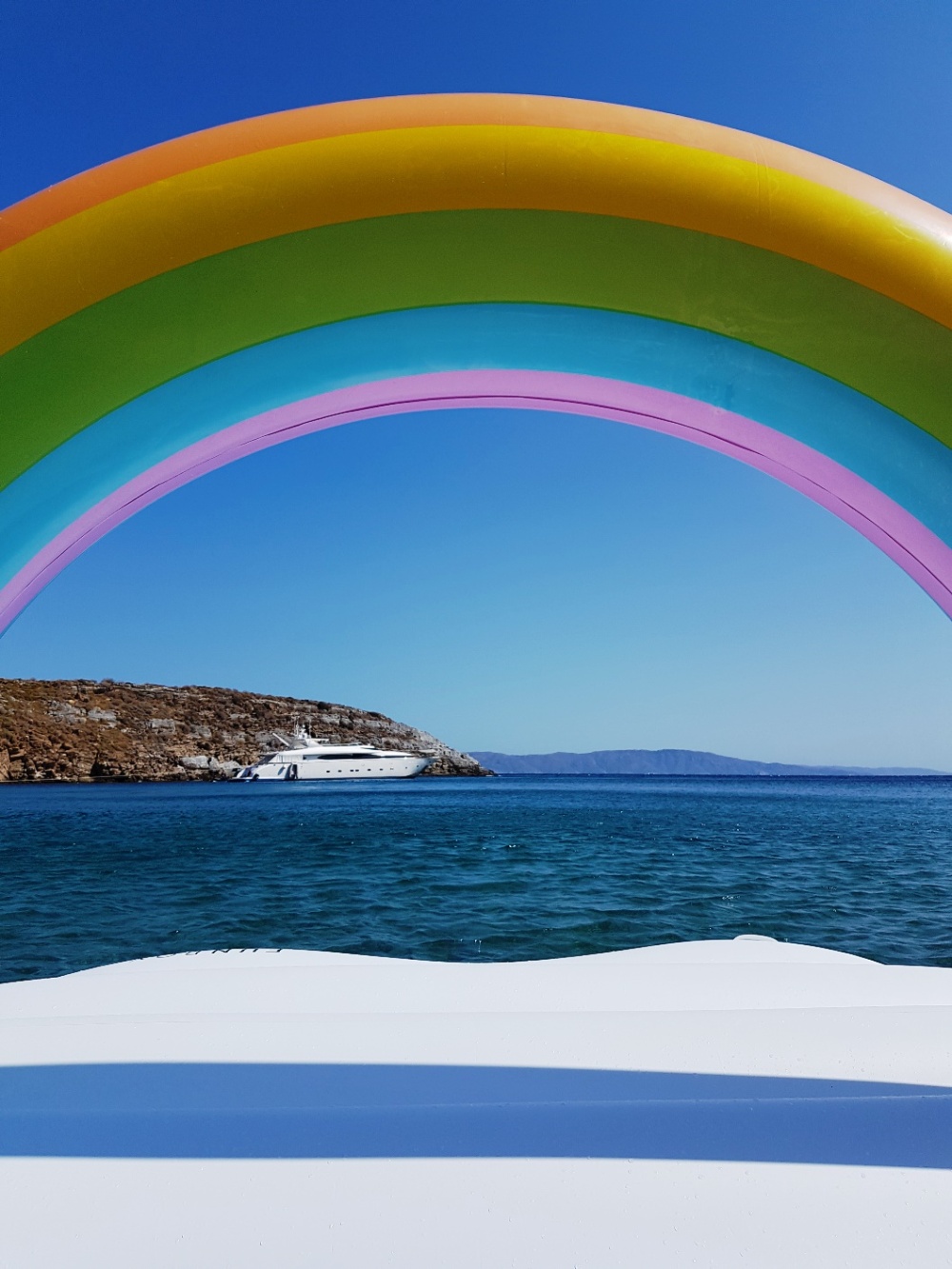
Port breeze brought us here from Lavrio on the Attica peninsula, close to the Athens International Airport. Greeted by the ancient silver mines, we sailed almost 15 miles east to meet upscale simplicity. This is Kea island (named after the ancient hero Ceos), also known as Tzia (stemming from the previous name attributed under the rule of Franks), the northernmost island of Western Cyclades in the Aegean Sea.


The art of belle vue is gloried in the hilltop shimmers of horizon infinity above Vourkari, at “Aigis Suites”, where Aspiotis family warmly welcomed us. Meticulously embedded in the island context, the déco stone reality of Aigis is enhanced with the globetrotting profile of both Liza and Takis.



Their hospitality story dates back in 1990’s, starting from “the stars”, the translation of the greek name “astra”, the former beach bar they owned on Gialiskari beach. Their vision for ‘suite dreams’ came true with the classy creation of ‘open privacy’ atmospherics, where all guests easily get together and view towards the infinity pool, but at the same time, keep their seclusion.


Alekos Fassianos’ unique artistic forms add further value to Aigis’ graphical elements. Highly respecting the objet d’art under the moonlinght from an iconic seabed (i.e. suite “Vithos”), we enjoyed a quintessential zoom-in beyond me-too windowpanes. The days at Aigis are full of sunset bar experiences and fine-dine inspirations (click here to read more about “Aigis Sunset Bar Resto: island art-full taste”).


The multifaceted shores of Kea and narrow valleys host locals and authentic travellers, royal families and world noblesse, who have long invested in properties of the island. Traditional windmills are turned into luxury villas and secluded beaches are waiting for yachts, couples, families and sophisticated voyagers.


A great part of the island toward the East and South is protected by the Natura 2000 enviromental network. Travel guides usually mention the renowned coastline shaping the beautiful beaches of Spathi, Xyla, Koundouros, Gialiskari, Pisses, Otzias etc. But unique travel frames are perfectly drawn in serenity, while on the beach of Kalydonychi, a few kilometers from the renowned beach of Spathi on the northeast. Let alone your travel dilemmas as above, so below, as within, so without.


Waves turn the volume up when they interact with the sand and the pebbles of the hidden beach of Psathi. So close to go, but not an easy road to follow. The view and dive definitely worth a visit, when the sea is calm.

The greater your voyage, the brighter your rainbow. This is where travel tales come out of the blue. Careful driving to the southeast redirects you from Pera Meria to Kato Meria and then to the stageplay of a natural welcome. Kaliskia beach is the synonym of dream-disclosure. Under the shadow of a few trees, the sight lies on emerald waters and the senses feel the vibes of the Ancient Karthaia hill nearby.


The remnants of the four ancient city-states with independent political structures of Kea, namely, Karthea, Korissia, Ioulis and Poiessa are now specially collected and exhibited in the Archeological Museum of Kea, revealing the richness of history, blending mythology with culture and heritage.

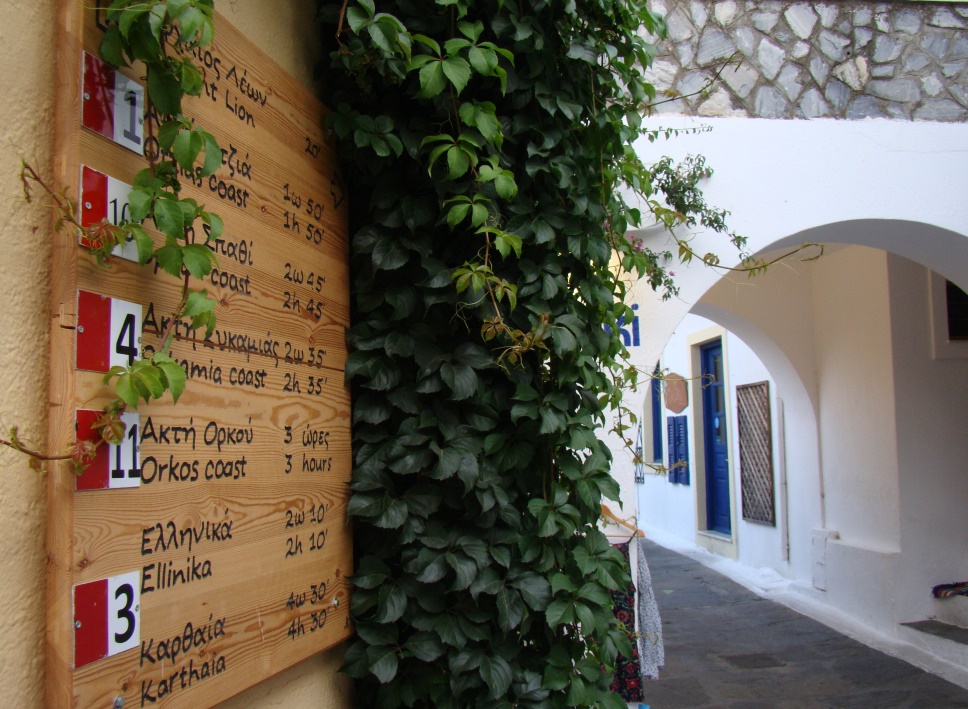
This is why Kea might be the place where your “personal Lion King” can protect your dreams of tomorrow; the Lion of Kea proudly rests on a footpath not-to-miss, a few meters from Ioulis (or Ioulida), the main town of the island. Making sure that everything is in place, it seems to have conquered the mountainous slope overlooking Ioulis with an alluring smile. Its reign of serenity dates back in the 6th-7th c. B.C. carved on a solid schist rock of approximately 8m. Back here again after almost two decades; the same view, the same feeling and great vibes before our very eyes.

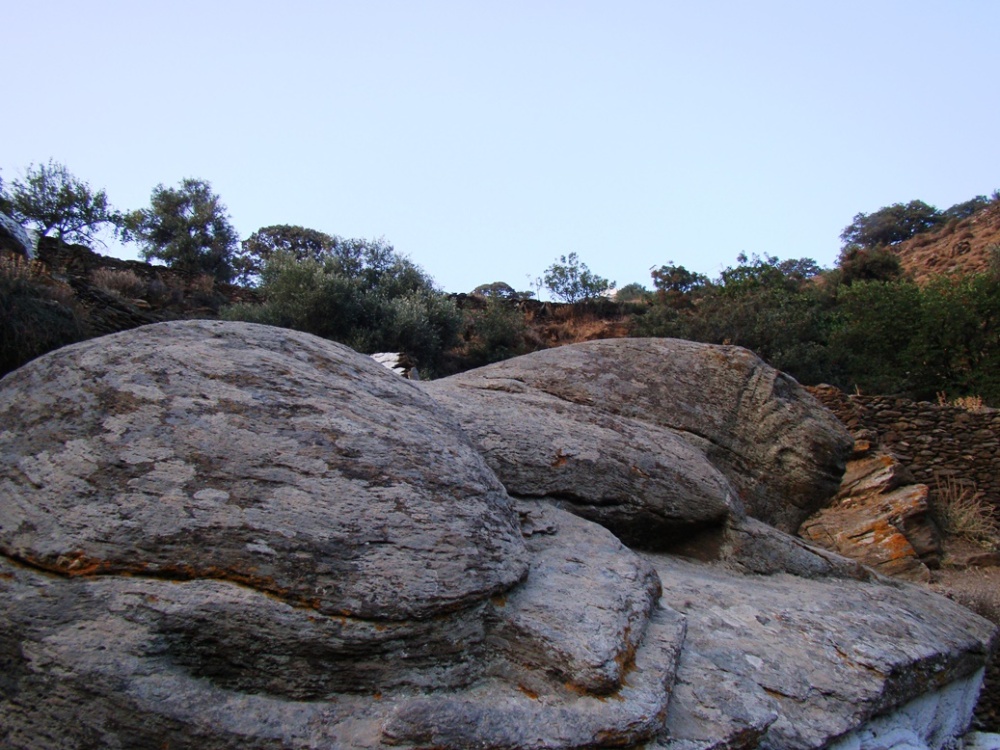
Ioulis’ architecture is a sui generis characteristic, basically different from other Cycladic islands. Under its roof tiles, it surely maintains the status of a densely populated village overlooking the island of Evia and the east of Athens-Attica. Tourism flows did not alter its colours and the market (“agora”) is pleasantly limited to only few cafés, local shops, taverns and restaurants/wine bars.
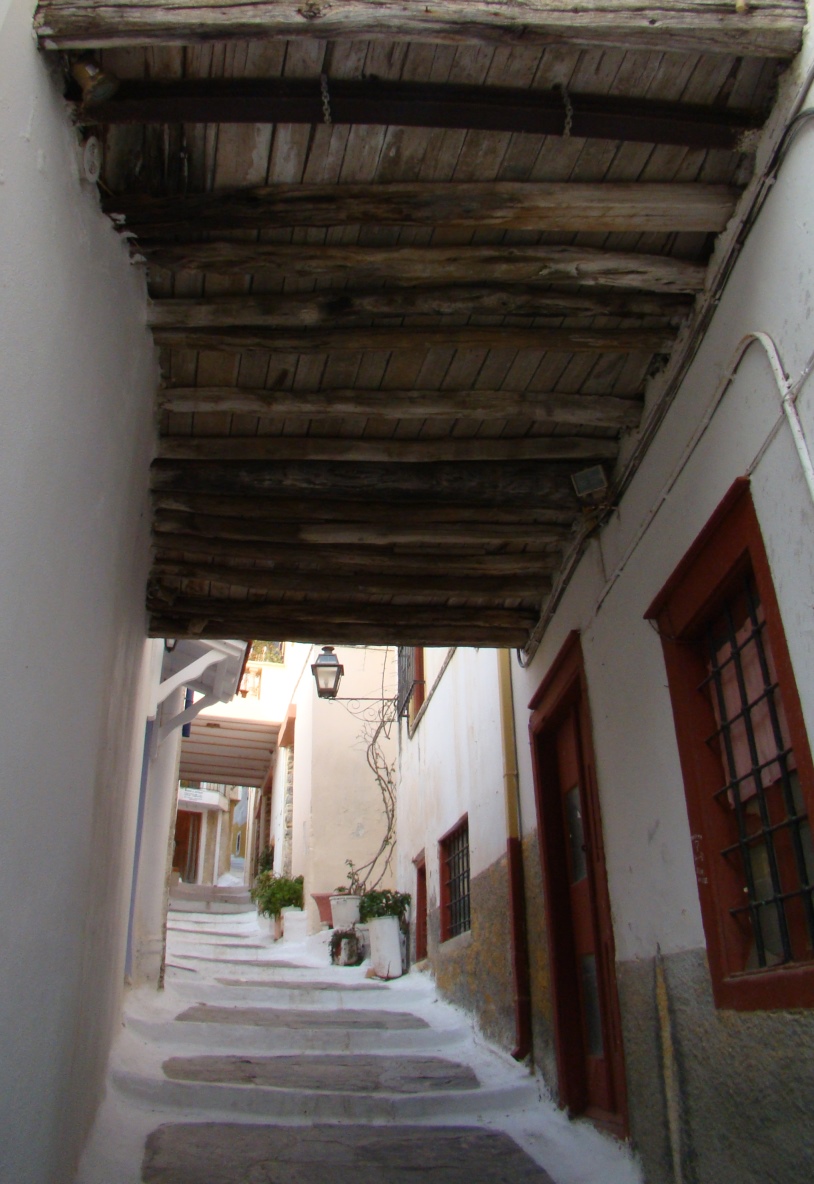


Free of mass tourism exaggeration, taverns and restaurants welcome travellers from around the world. Hip visitors taste fresh fish in Vourkari or enjoy local cuisine (“tziotiki”) in Ioulis. Time for dinner at the central square, next to the Town Hall. We do not miss the chance to taste traditional dishes such as goat with lemon and “paspalas” (small pieces of pork cooked with tomato and eggs) at the tavern “Steki ton Kalofagadon“.

Oak forests, thyme, goats, cows and pigs embellish Kea’s mountainous nature and receive the credits for carefully prepared cookies, rusks, cheese (such as “xino”), gold honey and cured meat products (such as “loza”, the prosciutto ‘made in Kea’). The annual Food Festival is not organised without reason and it will not betray your refined senses.



Yearlong activities take place at the “Red Tractor Farm”, where Marcie integrates sustainability with simplicity, stirs the ingredients of nature and adds the joy of creation to educate local community and visitors about the value of oak forests, support the acorn initiative worldwide, produce and export acorn cookies. Artisan acorn cookies are baked on the farm, carefully packaged, branded and shipped from Kea to the rest of the world.
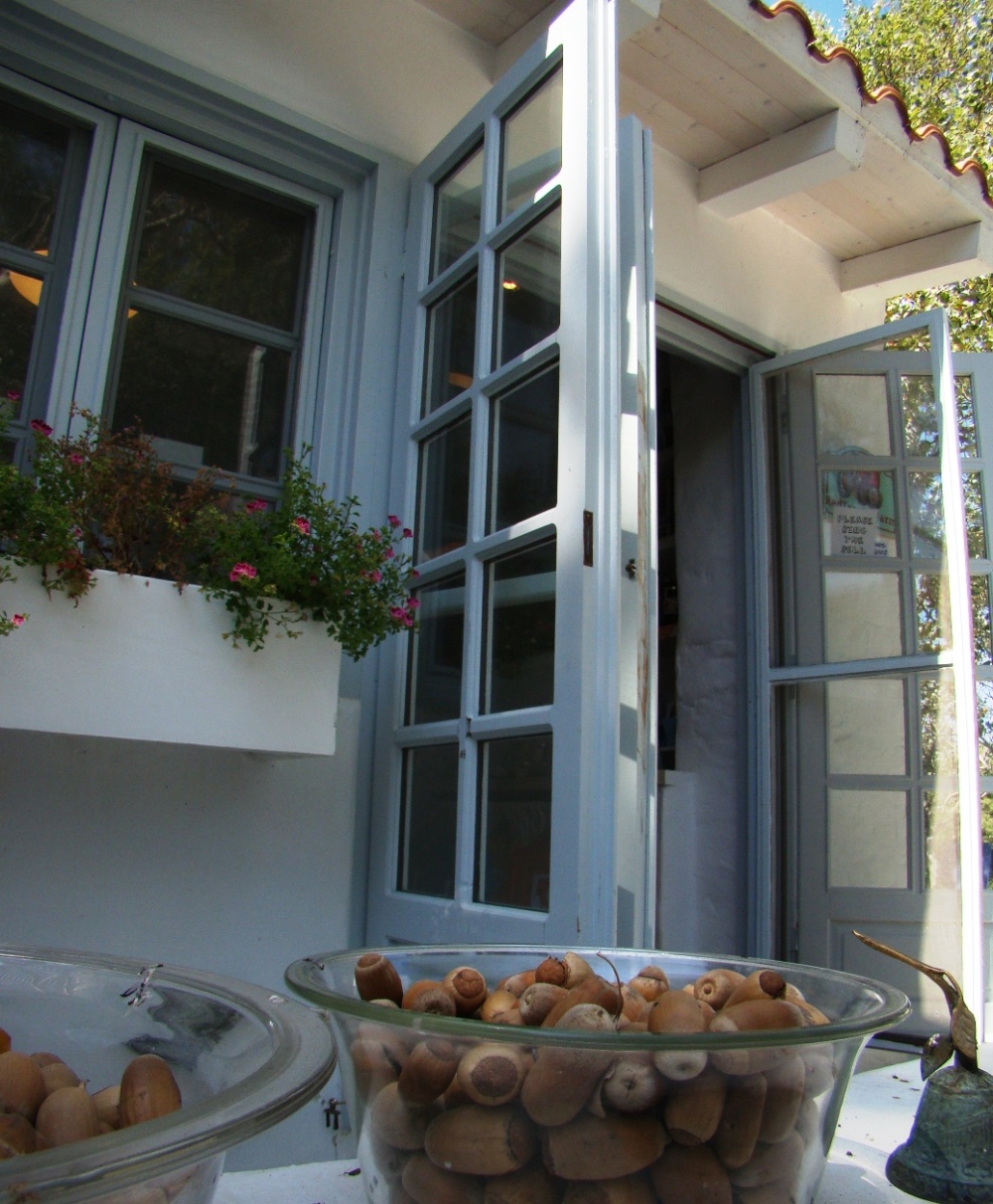
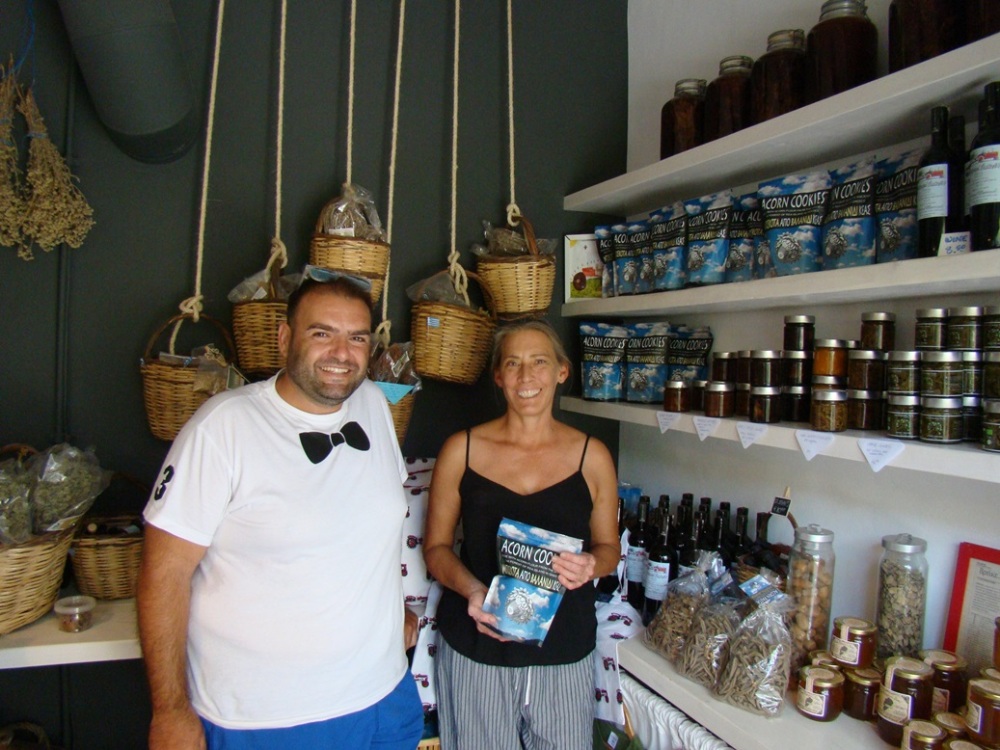
She explaines to us that the enthusiasm about acorn was not unknown in the US from the very beginning. While acorn is used for the production of flour, cookies etc., the cupule (“chamada”) is used in the leather tanning industry; for this particular reason, it is also collected and sent to Germany, Turkey and so on. Till next time, Marcie says goodbye with a bottle of pure St. John’s Wort Oil (spatholado).


On the road from the port (Korissia) to the town (Ioulis), you will be lucky enough to see home-made sundried tomatoes, in the making, on your left-hand side passing by Mylopotamos. Local products and recipes are not only displayed at “Aristaios”; they are felt, tasted and smelt. Shelves full of rusks and liquors, thyme and flower honey (“magiatiko” – its harvest takes place in May), herbal balsams and wax ointments.


Before the rediscovery of beaches on the west side of the island, stop for a brunch at the traditional bakery “Korissia” at the port; delicious hand-made cheese pies and mushroom pies come out from the wood-fired oven ready to take away. Ask for the sugar milk pie; should you find freshly baked trays, feel the velvet taste on your palate.
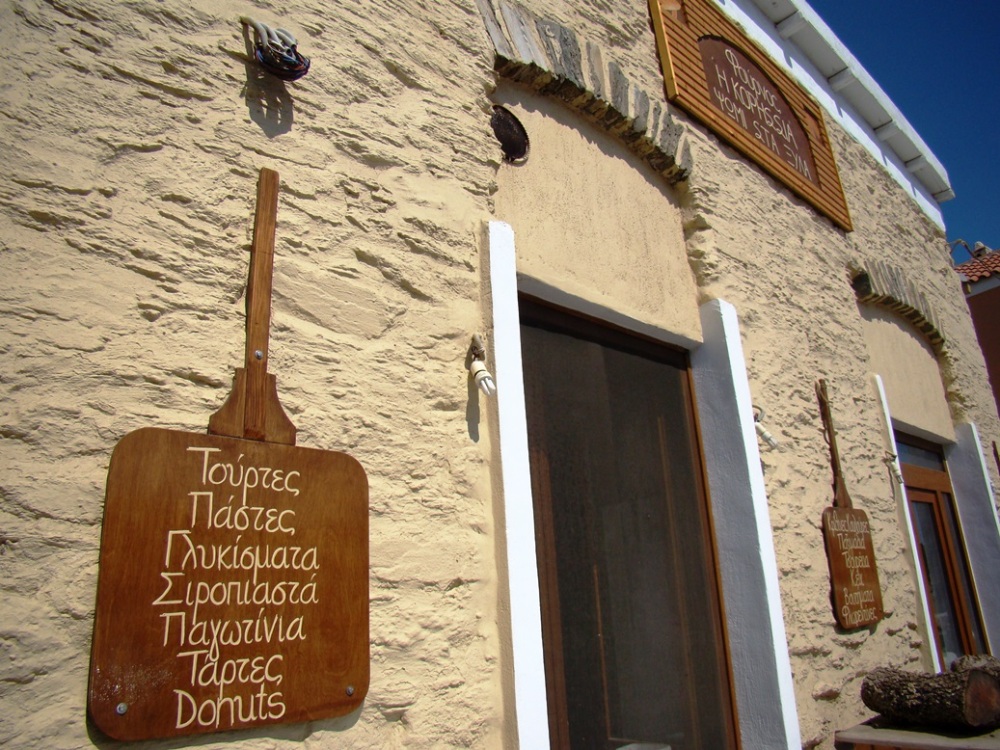

Although you may need to reserve your sunbed at Koundouros and Koundouraki many weeks before (i.e. mobile applications also available), there are also alternative options to select and dive deep. One option is a special ready-to-dive access to the sea from” Vrahos” beach bar on the rocks, which provides 180o views over the famous gulf of Koundouros with its impressive villas and mill houses.

Some kilometers south of the well-known beach of Xyla, the hidden beach of Kalogiros unveils blue rediscovery beneath the waves. All yours.
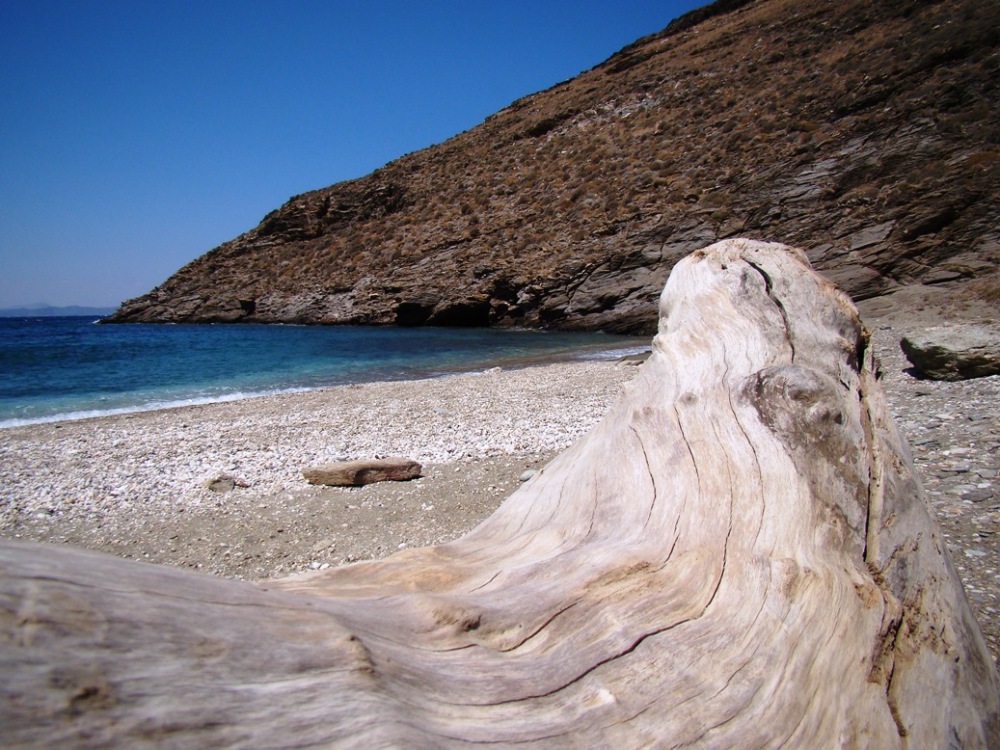
Kea’s industrial society still has stories to narrate from early to mid 1900’s. The expertise of Kea’s workers in the art of enameling was pretty much appreciated worldwide. The old enamel factory in Korissia used to be the largest in the Mediterranean region (todayit is closed), but it is still possible to get the feeling of those days, almost hear the voices and noises, machines working and traffic from and to the port. The Club of Friends of the Enamel Factory of Kea currently exhibits some preserved machinery (open-air exhibition) and archives (in a small building) in Korissia, which is open to the public.



Kea inspires people from all over the world. Music, narration, history and international storytellers meet every year at the Folktale Festival.
You have to stand on Kea’s characteristic grey stone with green streaks, walk through an extensive and well-kept network of trails and old stone-paved paths; you have to be there, to live, to share and to believe.

Loosen the halyard and set sail, full speed ahead!

